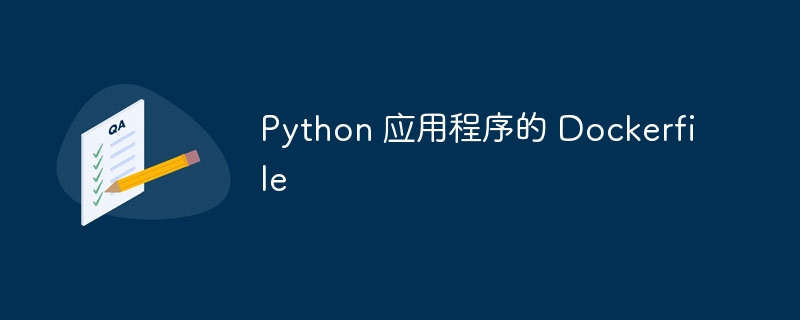
让我们为 应用程序创建一个简单的 file。此示例假设您有一个名为 app.py 的 python 脚本和一个包含应用程序依赖项的requirements.txt 文件。
- 打开终端。
- 导航到要创建或编辑 dockerfile 的目录。
- 输入 vi dockerfile 并按 enter。这将打开 vi 编辑器,其中包含一个名为 dockerfile 的新文件。
- 按 i 进入插入模式。您现在可以开始输入 dockerfile 内容。
- 完成编辑后,按 esc 退出插入模式。
- 输入 :wq 并按 enter 键保存更改并退出 vi。如果您想退出而不保存,请输入 :q!并按 enter 键。
# use an official python runtime as a parent image from python:3.9-slim # set the working directory in the container workdir /app # copy the current directory contents into the container at /app copy . /app # install any needed dependencies specified in requirements.txt run pip install --no-cache-dir -r requirements.txt # make port 8080 available to the world outside this container expose 8080 # define environment variable env name world # run app.py when the container launches cmd ["python", "app.py"]
登录后复制
在此 dockerfile 中:
- 我们使用版本 3.9 的官方 python docker 映像(具体来说,是较小的 slim 版本)。
- 我们将容器内的工作目录设置为/app。
- 我们将当前目录(您的 app.py 和requirements.txt 文件应驻留在其中)复制到 /app 的容器中。
- 我们安装requirements.txt中指定的python依赖项。
- 我们公开端口 8080 以允许与容器通信。
- 我们将环境变量name设置为“world”(您可以根据需要更改它)。
- 最后我们指定容器启动时运行的命令是 python app.py。
要使用此 dockerfile 构建映像,请导航到包含 dockerfile 的目录并运行:
docker build -t my-python-app .
登录后复制
将 my-python-app 替换为 docker 镜像所需的名称。
构建镜像后,您可以使用以下命令运行容器:
docker run -p 8080:8080 my-python-app
登录后复制
此命令运行一个基于您的 docker 映像的容器,将端口 8080 从容器转发到主机上的端口 8080。根据您的应用程序的要求调整端口映射。
立即学习“”;
以上就是Python 应用程序的 Dockerfile的详细内容,更多请关注php中文网其它相关文章!
 微信扫一扫打赏
微信扫一扫打赏
 支付宝扫一扫打赏
支付宝扫一扫打赏

